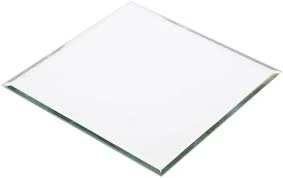Patterned glass has long been a staple in both residential and commercial architecture, offering both aesthetic appeal and functional benefits. The price of patterned glass, however, can vary greatly depending on factors such as design complexity, glass thickness, and additional treatments. This article provides an in-depth analysis of the price dynamics of patterned glass, drawing on industry expertise and real-world experience to guide potential buyers in making informed decisions.

Patterned glass is not just another decorative element; it plays a pivotal role in creating ambiance and privacy while allowing light to filter through in a unique manner. The production of patterned glass involves pressing semi-molten glass between two rollers, one of which is etched with the intended pattern. This process not only determines the final appearance of the glass but also significantly impacts its price.
One key factor influencing patterned glass prices is the complexity of the design. Simple patterns tend to be more economical due to lower manufacturing costs. However, intricate designs require more sophisticated roller designs and precise handling, which can increase the cost. For those seeking a unique touch, custom patterns are available but at a premium due to the bespoke nature of the service.

The thickness of the glass is another important price determinant. Standard thickness options range from 4mm to 12mm. Thicker glass generally commands a higher price due to the additional material required and the increased durability it offers. Thicker glass is often preferred for applications demanding extra strength and safety, such as in balconies or facades, which can justify the higher cost.
Additional treatments such as tempering or lamination also affect the price of patterned glass. Tempering involves heating the glass to increase strength and resistance to thermal shocks, making it a safer option for areas prone to breakage. Laminated glass, composed of multiple layers with a plastic inner layer, offers enhanced security and acoustic properties. Both treatments add value and utility but also contribute to a higher total cost.
patterned glass price
Regional market trends can also cause variations in the price of patterned glass. Areas with a high demand for architectural glass products might experience slight price increases due to market pressures. Conversely, regions with numerous suppliers may benefit from competitive pricing. Buyers are advised to conduct local market research to understand these dynamics better.
Environmental considerations are becoming increasingly important in determining patterned glass prices. With a growing demand for sustainable building materials, glass manufacturers are investing in eco-friendly production methods. Although these environmentally responsible options might cost more upfront, they often result in long-term savings through energy efficiency and potential tax benefits.
From an experiential perspective, engaging directly with reputable manufacturers or suppliers can provide deeper insights into current price trends and available options. Clients who take the time to communicate their specific needs often receive tailored advice that can lead to cost-effective yet high-quality solutions. Establishing a rapport with suppliers also opens up opportunities for discounts or package deals, especially for large-scale projects.
Professionals in the construction and interior design industries who have regularly engaged with patterned glass emphasize the importance of balancing price with quality and desired functionality. Initially opting for the cheapest option might lead to future costs related to subpar quality or inadequate design satisfaction. Therefore, a thorough evaluation of the glass’s intended use, along with consideration of its aesthetic and practical attributes, should guide purchasing decisions rather than price alone.
In conclusion, understanding the various components that influence the price of patterned glass is essential for making an informed purchase. While costs can vary based on design complexity, thickness, treatments, and regional factors, informed buyers can make strategic choices that align with their financial and aesthetic objectives. By prioritizing quality and establishing a relationship with trusted suppliers, buyers are positioned to achieve the best balance between cost, functionality, and design, ultimately enhancing their space with the timeless elegance of patterned glass.



